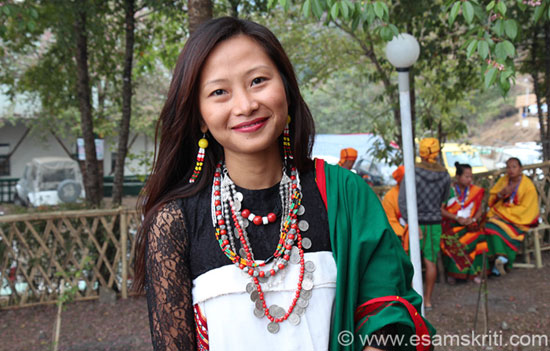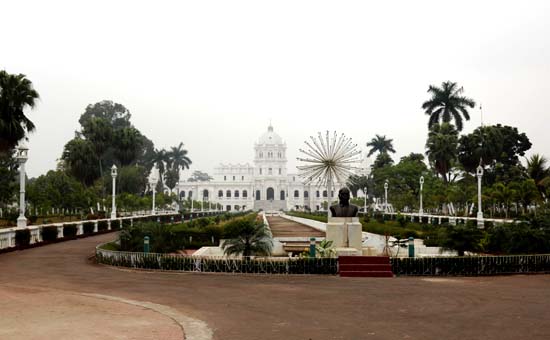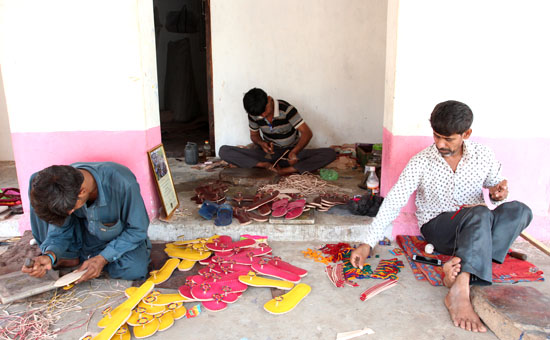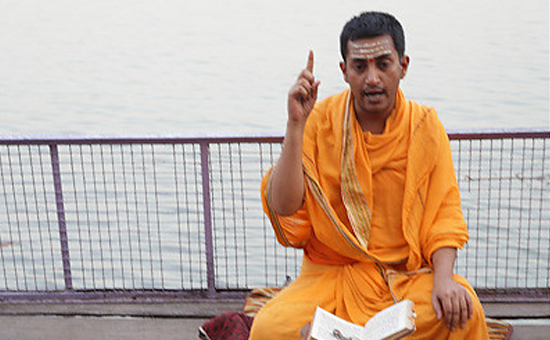- Read an informed and
balanced view on European word Caste including Benefits of the caste system.
Recently a Tamil Nadu minister said, “Sanatan Dharma is a principle that divides people in the name of caste and religion. Uprooting Sanatan Dharma is upholding humanity and human equality. I stand firmly by every word I have spoken.” the DMK leader wrote on X.” Source Hindustan Times
Just
asking-Do the same people associate Gun Culture in the U.S. with Christianity? Or speak about the high per capita RAPE per 1,00,000 of population in Germany-9.4, UK-17, and U.S.-27.4 as against 1.8 of India in 2010.” Source Times of India
Earlier
in 2023 a bill seeking to explicitly ban caste discrimination was introduced in
the California Senate by Senator
Aisha Wahab What is her understanding of the European word
caste and Bharatiya Samaj?
Before them the British
criticized caste and the Leftists/liberals do to this day. I am not saying the
system is perfect. But one needs to take a balanced view. Actually, caste is
used to divide Hindus and criticize India.
In Bharat, people are more
interested in Karmas than caste for e.g. we remember Shivaji Maharaj for his sukarmas. But some in the West and
liberals in India keep on harping about his caste.
Read Shivaji’s Karmas matter not caste
So also all, Indian
media included, use the word Dalit when it is not referred to in the Indian
Constitution.
This article provides background to caste, Why British found fault with caste, Dharampal’s reports on schools in Madras Presidency, Spiritual leaders across castes, Benefits of the caste system, Manusmriti, Why backward classes are poor and Definition of word Dalit.
1.
European origin of word Caste and Indic equivalent
The word ‘caste’ is of Spanish or Portuguese origin and fails to capture the meaning of the Indian term, jati, which more properly translated as “community.” Jati in traditional
India promoted and preserved diversity and multiculturalism by allotting every
jati a particular space and role in society so that no jati would be
appropriated or dominated by another.
2.
Historical Background to caste
Indian scriptures
do not sanction caste. Read The Truth
behind caste
“In the 10th century, the castes were comparatively fluid. But then the fundamental values of Dharmasastras were changed to provide defensive ramparts in order to present a solid front to an aggressive alien culture and religion.” History and
Culture of Indian People Volume 5 Post foreign invasions the caste
system became rigid.
That is probably why Swami Vivekananda said, “It is owing to caste that 300 million people can find a piece of bread to eat. It is an imperfect institution no doubt. But if it had not been for caste, you would have had no Sanskrit books to study. This caste made walls, around which all sorts of invasions rolled and surged but found it impossible to breakthrough.”
However, the Varna system degenerated, over time. Abbe J.A. Dubois, a Christian missionary of eminence, who stayed in India from 1792 to 1823 wrote, “This plan of dividing the people of India into castes is not confined to the law givers of India.” Pg. 66 J Sai Deepak wrote in India that is Bharat
Sai added, “But I am suggesting that it was under the British that ‘caste’ became a single term capable of expressing, organizing and above all ‘systematising India’s diverse forms of social identity, community and organization.” Pg. 304
3.
Why British found fault with Caste?
Noted
Gandhian Dharampal
wrote in Rediscovering
India, “For the British, as perhaps for some others before them, caste has been a great obstacle, in fact, an unmitigated evil not because the British believed in casteless-ness or subscribed to a non-hierarchical system but because it stood in the way of their breaking Indian society, hindered the process of atomisation, and made the task of conquest and governance more difficult.”
4. Maximum number of students in Madras Presidency were SUDRAS
Dharampalji went through British and Indian archives to reproduce reports of surveys, undertaken by the British in Bengal, Punjab and Madras Presidency (1800-1830), in his book The Beautiful Tree: Indigenous Indian
Education in the 18th century According to the collectors’ reports reviewed by Governor Sir Thomas Munro on 10 March 1826, of the 30,211 male school students in Madras Presidency, 20 percent were Brahmins and Chettris, 9 percent were Vaishyas, 50 percent were Shudras, and 6 percent were Muslims. Others constituted 15 percent. Read more here
These
percentages indicate that Sudras comprised the majority of students and
scholars in these regions. Wish politicians read Dharampalji’s book.
5. Spirituality broke caste distinctions
Author, ex-British
Council Scholar and Spiritualist Dr Satish Kapoor wrote in Hinduism:
The Faith Eternal that spirituality is not confined to higher castes
or classes or gender. Veda Vyasa was born to a fisherwoman, Tiruvalluvar, the
Tamil poet-saint, to a weaver. Tirupann, the Alvar saint, was panar, an untouchable
etc. Pg. 71 Many saints of medieval Maharashtra came from the lower strata of
society. Goraba (1236-1317) was a potter, Namdeva (1270-1350) a tailor, Tukaram
(1650) a sudra peasant.
Ramanujacharya
(1017-1137), founder of one of five major Vaishnava schools, initiated
non-Brahmins into his school of thought. Ramananda (1400-1470) taught the
fundamentals of Bhakti to Ravidasa, a cobbler and Kabir, a weaver. Mira Bai
(1498-1557) Rajput Queen was a follower of Sant Ravidasa” Pg. 72 whose followers are today’s chamar community (of Ramdasai Sikhs), a Scheduled caste in Punjab.
6. Benefits of Caste
System
1. Well known author and former head of Proctor and Gamble India Gurcharan Das said in Mint, “My own politically incorrect answer is that we had in India the good fortune of having merchant castes, trading communities. If you institute economic reforms in a society where people know how to conserve capital… If you have communities in whose DNA is that… it is a genetic advantage.” Source He also wrote, “Joel Kotkin demonstrates these strengths in the case of Palanpur Jains, who have used their castes and family networks in wresting half the global markets for uncut diamonds from the Jews.”
2. Columnist Aakar Patel wrote in the Mint that the current situation in Pakistan is because of an imbalance in caste. The situation arose because there is no mercantile caste in Punjab after the Khatri-Arora combine migrated to India in 1947. Source
3. Former
Prof of Finance at IIM Bangalore, Dr R Vaidyanathan wrote in Caste as social capital, “The World Bank suggests that the remarkable growth of Tirupur (Tamil Nadu) is due to the coordinated efforts of Gounders many of them not even matriculates. The needed capital was raised within the Gounder community, a caste relegated to the land-based activities, relying on community and family network. Those with capital in the Gounder community transfer it to others in the community through long-established informal credit institutions and rotating savings and credit associations. These networks were viewed as more reliable in transmitting information and enforcing contracts than the banking and legal systems that offered weak protection of creditor rights.” Source Caste as social capital
4.
During the last few years read about start ups, many of whom had a co-founder
from a Marwari background. During my corporate life and thereafter read about
how Marwaris make very good accountants. In fact, the Tata negotiating
team for purchase of aircraft from Airbus was led
by two Agarwals (Nipun and Yogesh), both of whom belong to the business
community. Read Why Marwaris
take to business
7. Manusmriti
Manusmriti is criticized
a lot.
Author Nanditha
Krishna wrote in Open Magazine, “Manu’s “memories” are a record of the social life and ideas of his times, and probably did not affect the collective life of the people. Each era has its smriti and it is ridiculous to quote the belief and lifestyles of people who lived 1,600-1,800 years ago as authoritative laws today.”
Dr Subhasis Chattopadhya compares how Indians treat writings of Manusmriti vs. history of the Roman Inquisition (less
than five hundred years ago). Should there not be a level playing field?
Moreover,
no scripture or shastra is uniformly practiced across India because diversity
is intrinsic to Sanatana Dharma! So to cherry pick the Manusmriti to hit out at
our Dharma is incorrect to say the least.
8. Who is a Dalit?
 She belongs to Kachari tribe, Nagaland. 2014.
She belongs to Kachari tribe, Nagaland. 2014.
Just like the words ‘South Asia’ came into prominence in the 1970’s so did the word Dalit come into prominence since the 1990’s. There are national commissions for scheduled castes and backward classes but nowhere is the word Dalit used. The word finds no mention in the Indian Constitution. Not all Dalits are untouchables.
The nomenclature used to describe the backward classes keeps changing. In the 1890s they were called depressed classes. In the early 1930's, Mahatma Gandhi named them Harijans. The Government of India Act, 1935 introduced the term Scheduled Caste (SC) while Scheduled Tribe (ST) came into being after the Constitution was adopted.
 Ujjayanta Palace Agartala has a bust of Ambedkar because its former rulers are now ST.
Ujjayanta Palace Agartala has a bust of Ambedkar because its former rulers are now ST.
Did you know that ace music director
Rahul Dev Burman belonged to the Royal Family of Tripura, now considered ST.
In Rajasthan, the Meena community ruled parts of Rajasthan before the Rajputs but are a scheduled tribe today. Read History of
Meenas
Read Who is a
Scheduled Caste
If India did not respect so called lower
caste, would a murti of Ahilyabai Holkar (who belonged to the shepherd
community) be found outside Kashi Vishwanath Mandir.
Let us accept that caste discrimination
exists but it is continuously falling due to reform movements and affirmative
action. Media can help by not referring to caste of
voters and candidates.
9. How and why do the
backward classes find themselves in the situation they are today?
 Devabhai makes footwear in a Kutch, Gujarat village & sells it to shops in Bhuj.
Devabhai makes footwear in a Kutch, Gujarat village & sells it to shops in Bhuj.
Before British rule, traditionally,
education institutions were funded by revenue contributions made by the
community and state. About one-third of the total revenue (from agriculture and
sea ports) was assigned for social and cultural infrastructure (including
education).
This system stayed mainly intact through
all previous political turmoils. The British, however, increased the quantum of
land revenue and adversely changed the terms of payment for the community. They
centralised collection of revenue, leaving hardly any revenue to pay for social
and cultural infrastructure.
Further, the means of the manufacturing classes (small-scale enterprises or SMEs in today's parlance) were greatly diminished by the introduction of European goods. Craftsmen, especially those engaged in the making of cloth, manufacture, mining of metals and construction work, were reduced to a state of homelessness.
Sapped of funds, education institutions
and manufacturing classes became history, leading to grave consequences.
It appears that the "backward" status they are struggling against is some ancient phenomenon. In reality, however, their cultural and economic
backwardness (as distinct from their ritualistic status on specific occasions)
arose post 1800. What backward caste movements are attempting to achieve
is a reversal of the effects of the British policy, and restoration of the
position, status, and rights of these peoples to those that existed prior to
1800. Read Were
Backward Classes always suppressed in India
10. Notwithstanding caste,
why is India better off than others?
Bharat did not have thirty year wars
like Christians and Protestants did in Europe or Shia Sunnis like we see today.
India is home to Shias, Sunnis and Ahmediyas who are not treated as Muslims in
Pakistan. Our President is a woman and member of the Vanvasi Samaj. India did
not have slavery like in Europe and America or equivalent of the horrible Roman Inquisition In 2020, 45,222 people
died from gun-related injuries in the U.S., according to the Centers for
Disease Control and Prevention. Local
populations have not vanished like the Red Indians in
the U.S. or the aboriginal tribes of Australia.
So
deep has this theory of centuries of suppression got ingrained in our minds
that the law was compelled to provide safeguards.
Brahmin
Hatred

Like other human beings, including myself, Brahmins have faults. It is worth noting that Ambedkar’s Brahmin teacher took such a liking to him that he changed his surname from Ambavedekar to his own in the school’s records. (Dr. Ambedkar Life and Mission by Dhananjay Keer).
Sayaji Rao Saheb Gaikwad, Naval Bhathena and Shahu Maharaj supported Ambedkar’s education. Note that Ambedkar’s second wife was a Brahmin.
Read Contribution of
Brahmins to Indian Society and Culture
Read Critical analysis of Ambedkar’s thoughts on Hinduism and Annihilation of Caste
Indians
across the world and Indian media houses have to work together to counter the
anti-India narrative by fellow Indians and foreigners.
Some learned associate Hinduism with
caste. However, they rarely write about social divisions in other religions
etc. for e.g. sects in Christianity or Ashrafs and Ajlafs in Islam.
No society or country is
perfect. However, we can strive to do better.
Also
read
1. When caste was
not a bad word
2. Impact of Census
1881 by Dharampalji
3. Vedas and other
scriptures on Caste
4. Why we cannot be
so one-dimensional on caste
5. The Truth about
Caste
6. Unsung Women
Warriors of India
7. Why Ahilyabai
Holkar was a great Woman
8. Tarabai, the
Maratha Warrior Queen
9. Rani Abakka, who
defeated the Portuguese at sea
10. Women Gurus in
Hinduism
11. Yashovati, the
First Queen of Kashmir
12. Boxer Nikhat
Zareen wins second gold